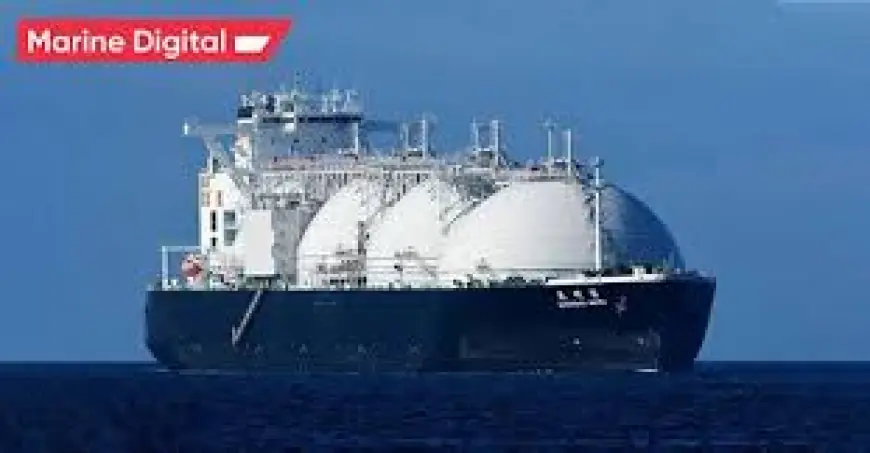Marine Oil and Gas Tanker Market 2030 Future Growth Insights
Many shipping companies are investing in fleet modernization to ensure their vessels meet the latest safety, environmental, and operational standards.

Introduction
The global marine oil and gas tanker market plays an indispensable role in ensuring the smooth flow of energy resources across continents. From crude oil and refined petroleum products to liquefied natural gas (LNG) and chemicals, these vessels form the backbone of international energy logistics. According to industry estimates, the Global Marine Oil and Gas Tanker Market was valued at USD 172.3 billion in 2024 and is projected to reach USD 219.7 billion by 2030, growing at a CAGR of 3.7% during the forecast period.
This steady growth reflects rising global energy consumption, rapid industrial expansion, and the irreplaceable role of seaborne trade in connecting producers with consumers worldwide. While pipelines and overland transport provide regional connectivity, marine tankers remain the most cost-effective, flexible, and scalable solution for long-haul energy distribution.
Yet, the industry is not static. It is undergoing a period of transformation driven by environmental imperatives, technological upgrades, and the growing complexity of global trade networks. New propulsion technologies, advanced digital tools, and regulatory frameworks are shaping how shipping companies design, operate, and manage tanker fleets.
Market Drivers
Several key factors are fueling the growth of the marine oil and gas tanker market:
1. Rising Global Energy Demand
The world’s appetite for crude oil, LNG, and refined fuels continues to grow, particularly in emerging economies across Asia-Pacific, Africa, and Latin America. Expanding industrialization, urbanization, and transportation needs require reliable marine logistics networks to ensure uninterrupted supply.
2. Limited Alternatives to Seaborne Logistics
Despite regional pipeline projects, maritime transport remains the only viable solution for moving vast energy volumes over long distances. Tankers are uniquely positioned to serve diverse markets, including landlocked regions connected through coastal terminals.
3. Offshore Exploration and Production Growth
As onshore reserves mature, energy companies are investing heavily in offshore drilling projects. These operations require sophisticated tanker fleets to transport crude and gas from extraction zones to processing hubs.
4. Technological Innovations in Tanker Design
Advances in hull design, coatings, digital navigation, and energy-efficient propulsion systems are improving vessel performance, reducing emissions, and lowering operating costs. These innovations are critical to maintaining competitiveness in a cost-sensitive industry.
5. Stringent Environmental Regulations
International Maritime Organization (IMO) regulations on sulfur emissions, greenhouse gas reductions, and ballast water management are accelerating the adoption of LNG, methanol, hybrid-electric propulsion, and other sustainable technologies.
Download Free Sample Report: https://www.techsciresearch.com/sample-report.aspx?cid=28900
Emerging Trends in the Marine Oil and Gas Tanker Market
The industry is witnessing a wave of transformative trends that will reshape its future trajectory.
1. Decarbonization and Green Shipping
The global push toward decarbonization is revolutionizing tanker design. Shipowners are investing in LNG-powered vessels, methanol-ready tankers, and hybrid-electric propulsion to reduce their carbon footprint. Additionally, wind-assisted propulsion and biofuel testing are gaining traction as supplementary solutions.
2. Digitalization and Smart Shipping
The integration of IoT sensors, AI-based route optimization, and digital twins is driving smarter fleet management. Tanker operators now use predictive analytics for fuel consumption, hull maintenance, and emissions monitoring, improving both safety and efficiency.
3. Growth of LNG and LPG Transportation
With natural gas emerging as a transition fuel, demand for LNG tankers is rising rapidly. These specialized vessels, equipped with cryogenic containment systems, connect gas-rich nations with energy-hungry economies. Similarly, LPG tankers are in high demand for petrochemical feedstock and household energy needs.
4. Expansion of Asia-Pacific Market
Asia-Pacific is set to dominate global tanker demand. Rapid industrial growth, rising consumer energy needs, and expanding refining capacity in China, India, South Korea, and Southeast Asia are driving tanker procurement and fleet expansion.
5. Larger and Smarter Vessels
The industry is moving toward very large crude carriers (VLCCs) and ultra-large crude carriers (ULCCs) to maximize economies of scale. These massive vessels reduce per-barrel transport costs and enhance profitability.
Market Segmentation
The marine oil and gas tanker market is segmented across several dimensions:
By Tanker Type
- Crude Oil Tankers – transporting unrefined petroleum from production sites to refineries.
- Product Tankers – carrying refined fuels like gasoline, diesel, and jet fuel.
- LNG Tankers – designed with cryogenic systems for liquefied natural gas.
- LPG Tankers – transporting liquefied petroleum gas and petrochemical derivatives.
- Chemical Tankers – engineered with specialized coatings and safety systems to handle hazardous chemicals.
By Size
- Small Tankers (up to 10,000 DWT)
- Medium Tankers (10,000–60,000 DWT)
- Large Tankers (60,000–200,000 DWT)
- Very Large Crude Carriers (VLCC)
- Ultra Large Crude Carriers (ULCC)
By Propulsion
- Diesel-powered
- LNG-powered
- Hybrid/Electric-powered
By Application
- Crude Oil Transportation
- Refined Petroleum Products Transportation
- Natural Gas Transportation
- Chemical Transportation
Regional Insights
Asia-Pacific
The fastest-growing region, supported by rising industrialization, growing energy demand, and robust port infrastructure development. Countries such as China, India, and South Korea are leading investment in tanker fleets and LNG imports.
North America
A mature market characterized by strong regulations, advanced fleets, and significant exports of crude oil and LNG, particularly from the United States.
Europe
Driven by stringent environmental mandates, Europe is pioneering the adoption of alternative fuels and sustainable shipping practices.
Middle East & Africa
A key supply hub for crude oil and natural gas exports, with Gulf nations investing in modern tanker fleets to strengthen global energy trade.
Latin America
Emerging opportunities due to offshore exploration in Brazil and increased refined fuel imports across regional economies.
Industry Key Highlights
- Market size projected to reach USD 219.7 billion by 2030.
- Asia-Pacific remains the fastest-growing region in 2024 and beyond.
- LNG and LPG tanker segments witnessing robust growth.
- Environmental regulations accelerating green shipping practices.
- Investments in VLCCs and ULCCs to optimize economies of scale.
- Rising demand for digital solutions in fleet monitoring and route optimization.
Competitive Analysis
The global marine oil and gas tanker market is highly competitive, with major international shipping companies and regional players striving for market dominance. Strategies include fleet expansion, investment in green technologies, and strategic alliances with energy producers.
Key Market Players:
- Mitsui O.S.K. Lines, Ltd. (MOL)
- Euronav NV
- Teekay Corporation
- Frontline Ltd.
- NYK Line (Nippon Yusen Kaisha)
- Chevron Shipping Company LLC
- Scorpio Tankers Inc.
- BW Group
- China COSCO Shipping Corp.
- Tsakos Energy Navigation (TEN)
Competitive Landscape Insights:
- Euronav NV and Frontline Ltd. lead in crude oil tanker operations.
- Teekay Corporation and Mitsui O.S.K. Lines focus on LNG transport.
- China COSCO and NYK Line leverage strong regional networks for fleet deployment.
- Consolidation trends are visible, with mergers and alliances reshaping competition.
Future Outlook
The future of the marine oil and gas tanker market is tied to balancing energy demand with sustainability imperatives. As nations transition toward renewable energy, the role of natural gas and refined fuels will remain critical, ensuring demand for tankers well into the 2030s.
- Green Transition – Expect greater adoption of LNG, methanol, hybrid-electric, and even hydrogen propulsion systems.
- Digital Dominance – Data-driven fleet management will become standard across global shipping firms.
- Geopolitical Influences – Regional conflicts, energy trade shifts, and new exploration projects will shape fleet deployment.
- Infrastructure Expansion – Global port upgrades and bunkering facilities for alternative fuels will support tanker operations.
Overall, the market will continue its steady growth, driven by innovation, regulation, and unrelenting energy demand.
10 Benefits of the Research Report
- Provides accurate market size and growth projections to 2030.
- Offers detailed segmentation by tanker type, size, propulsion, and application.
- Identifies emerging trends in decarbonization and green shipping.
- Analyzes key drivers influencing market expansion globally.
- Delivers in-depth regional insights with growth forecasts.
- Covers competitive landscape with profiles of major players.
- Evaluates technological innovations in tanker design and operations.
- Assists investors in identifying high-potential growth opportunities.
- Highlights regulatory impacts shaping future market strategies.
- Supports informed decision-making with actionable data and forecasts.
Conclusion
The Global Marine Oil and Gas Tanker Market remains the cornerstone of international energy logistics. With a market value projected to surpass USD 219.7 billion by 2030, the sector is set for continued growth despite regulatory, environmental, and operational challenges.
Innovation in propulsion systems, advances in digital technologies, and the push toward greener fleets will define the industry’s future. Shipowners, policymakers, and energy producers must work collaboratively to balance rising energy demand with global sustainability goals.
Contact Us-
Mr. Ken Mathews
708 Third Avenue,
Manhattan, NY,
New York – 10017
Tel: +1-646-360-1656
Email: [email protected]
Website: www.techsciresearch.com
What's Your Reaction?
 Like
0
Like
0
 Dislike
0
Dislike
0
 Love
0
Love
0
 Funny
0
Funny
0
 Angry
0
Angry
0
 Sad
0
Sad
0
 Wow
0
Wow
0



















































